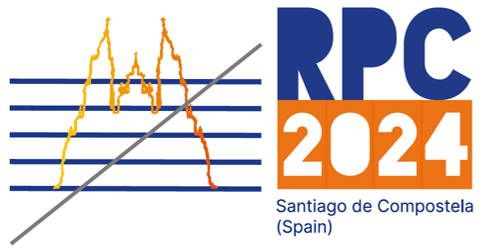Speaker
Description
The CMS Experiment utilizes advanced muon detection systems comprising various gas-based technologies, such as Drift Tubes, Cathode Strip Chambers, and Resistive Plate Chambers (RPCs). RPCs are notable for their rapid response, which is crucial for the system’s triggering mechanism. The CMS RPC system features a 2 mm gas gap filled with a mixture of 95.2% C2H2F4, 4.5% iC4H10, and 0.3% SF6. This mixture reacts under high radiation levels and intense high voltage (approximately 10 kV), producing fluorine ions that contribute to the aging of the chambers. Recent studies indicate that increasing gas flux can help disperse these ions, thereby delaying the aging process. With the LHC Phase-2 upgrade, the CMS will introduce 72 new RPCs with a reduced gas gap of 1.4 mm in areas expected to experience significantly higher radiation levels. Understanding the relationship between gas flux and aging is crucial for this upgrade. This study builds on initial research to enhance RPC longevity by developing mathematical and computational models for gas flow and fluorine ion transport. Using the Navier-Stokes equations for fluid dynamics and incorporating ion diffusion, migration under electric fields, and convection, these models are discretized using finite element methods via the Gridap library. This research underscores the importance of optimizing RPC design by carefully considering geometry and flow dynamics to minimize aging effects. Such advancements not only enhance the performance and durability of RPCs but also contribute to more cost-effective and reliable detection technologies in high-energy physics.

